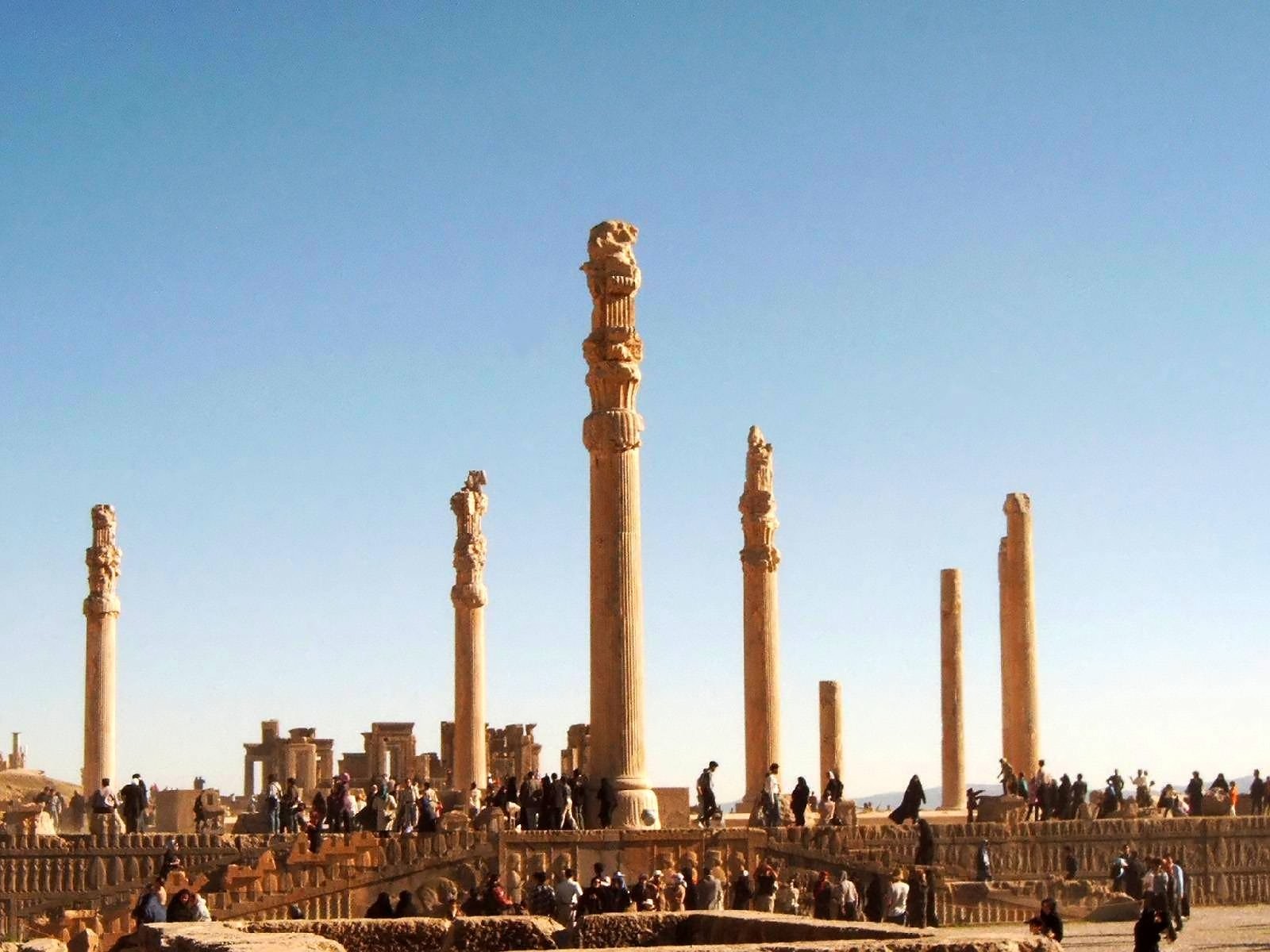AP Art History: Ancient Mediterranean Art
White Temple and Ziggurat:
Temple is a box like structure on top of the larger platform
About 65 feet tall - 5/6 story building
Uruk was probably the world’s first city still inhabited today
- 5000+ years after it was established
==Most important building in the city==
==Temple for sky god Anu==
Common belief in ancient cultures that gods lived in the sky
Took 1500 workers 5 years, working 10 hours a day
Temple seen as “residence” of Anu
Not many regular people allowed in the temple, but they could leave a votive offering (gift to god/goddess)
Places for display of objects, probably the most valuable votive offering
None of the entrances of the temple face the ramp going to the top of the ziggurat
==Ziggurat: A rectangular, tiered temple platform, usually made of mud brick==
Location is flat: ziggurat and temple seen from far distances, tall building
Mud brick was easy to produce and use but deteriorated
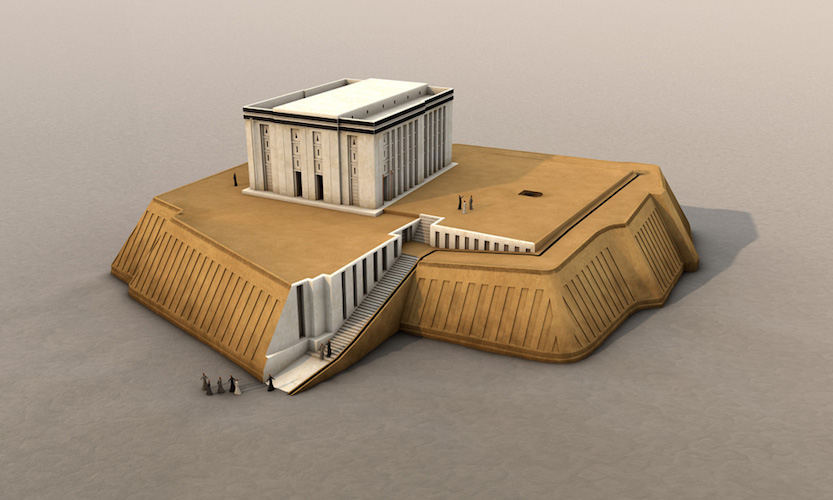
Statues of Votive Figures
1-3 feet tall
A typical hairstyle, beard, and clothing of a Sumerain Man
Not a portrait, but a symbol of a person
Found buried in the floor of a temple, a group of 12 primarily male figures
==Religious function==
Not naturalistic: not realistic or accurate to a real person
==Votive Figure: Placed in a temple to stand and pray at all times in the place of the person who left it there==
==Votive: An offering to a god or goddess, oftentimes a human figure but sometimes just a precious gift==
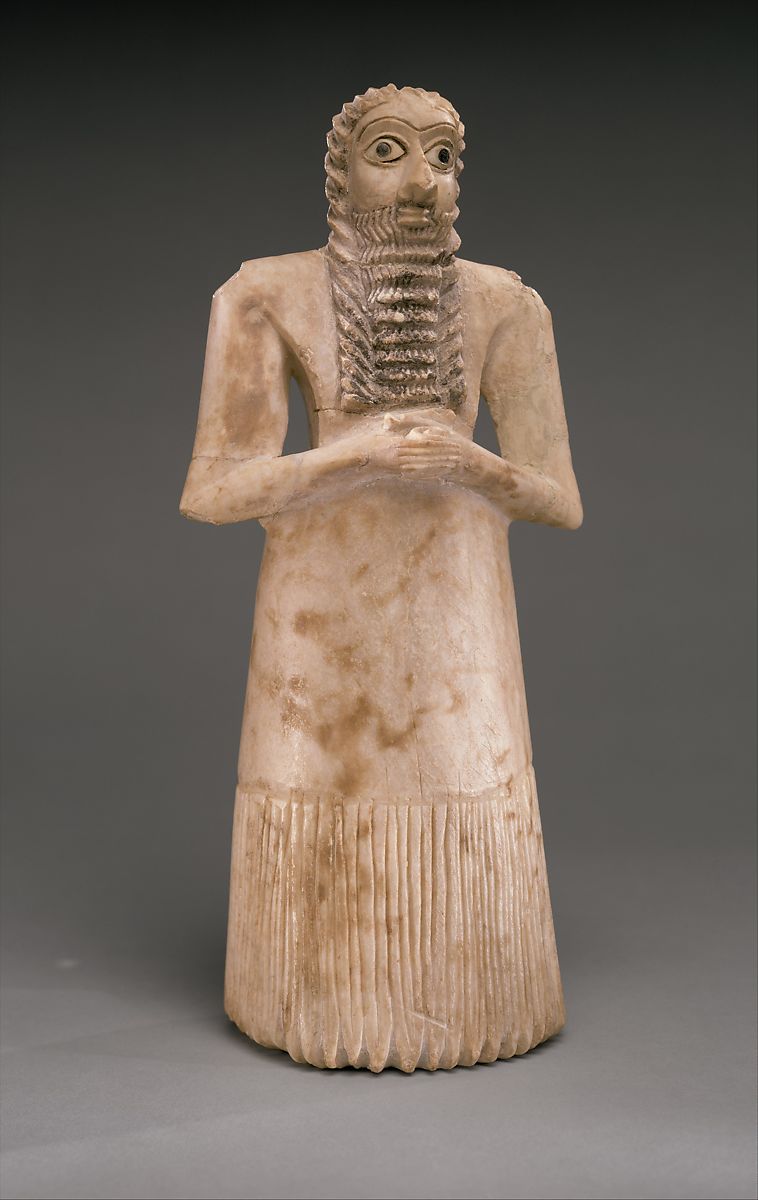
Standard of Ur from the Royal Tombs at Ur
Function unknown → could be commemorating a successful battle and celebrating afterward
Imported materials
- Red Limestone (India)
- Lapiz Lazuli (Afghanistan)
Found in a very rich, possibly royal, tomb in the major Sumerian city of Ur
Demonstration of trade routes across vast distances, even at the early moment of human civilization
Connection between the two sides → peace and war side
- Peace side could be celebrated after event portrayed in the war wide
Features registers
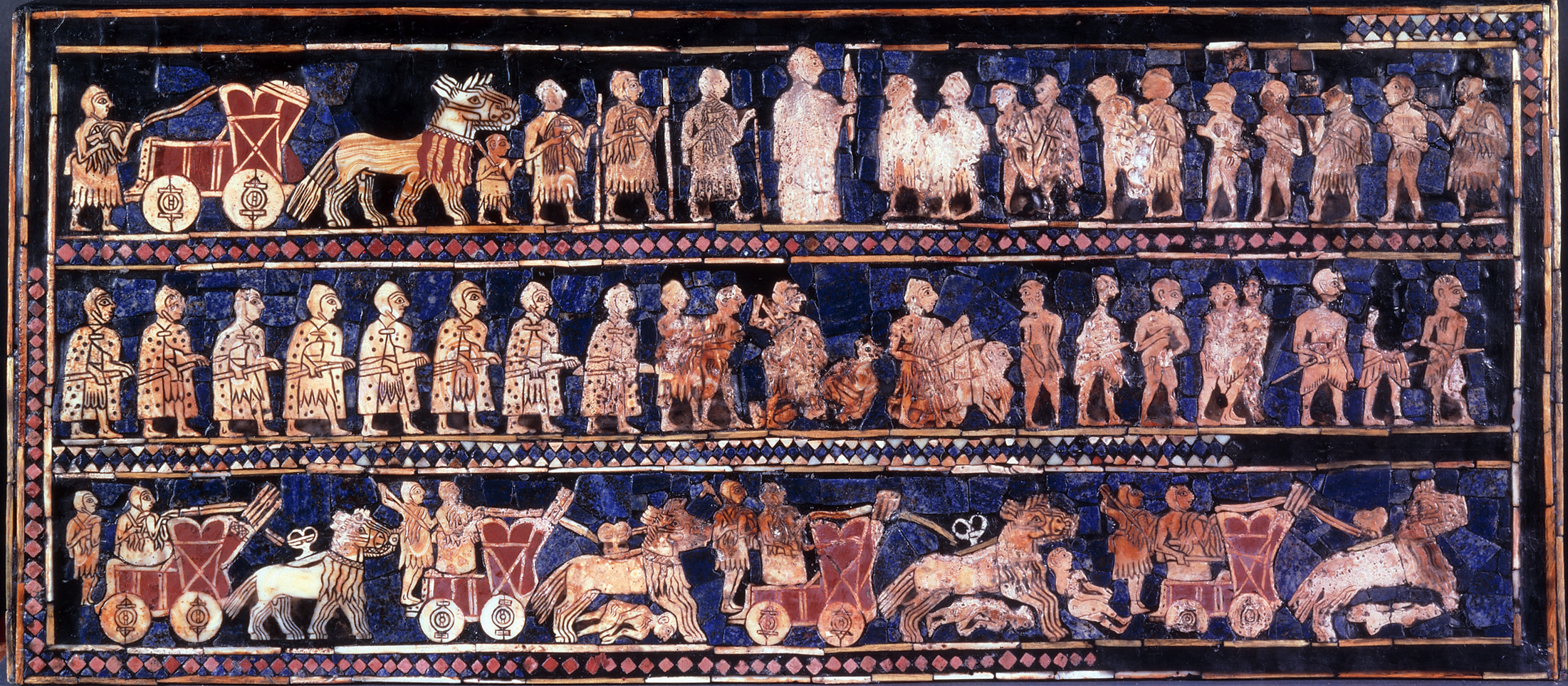
The Stele of Hammurabi
Relief sculpture at the top of the stele shows Shamash (sun god) speaking with King Hammurabi
Twisted perspective and hierarchy of scale
Throne that the god is sitting on is in the shape of a temple - representing his power and size
Passing over the rod represents giving power
Function: Commemorative and records a law code given by one of the first kings of Babylon
- Political and semi-religious function
1 of at least 50 Stelai with the law code on it → this is the best preserved
Found in Iran, far from Babylon, probably taken as war loot long after Hammurabi’s death
Most of the Stelai is a list of 282 laws set by Hammurabi “in order to keep the strong from oppressing the weak.”
Not the first law code ever, but the earliest that is completely preserved
The introduction names many Babylonian gods, giving Hammurabi the authority to rule over Mesopotamia
Political propaganda? Meant to make Hammurabi favorable to his religious subjects and to show the power he was handed by the god
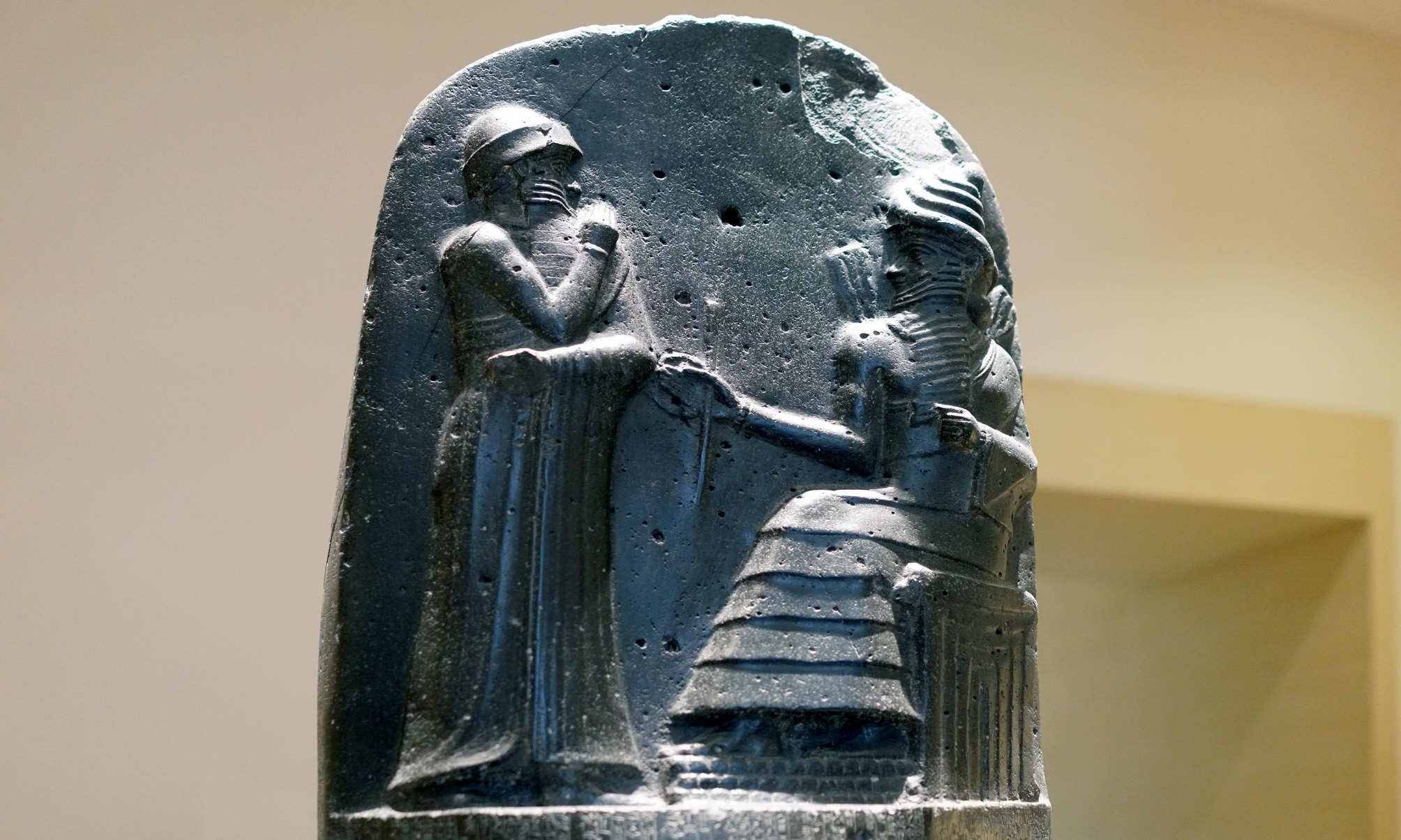
Lamassu from the Citadel of Sargon II
Combination of relief and sculpture in the round
Originally painted for more impressive effect
Bull symbolizes strength, power, aggression
Eagle represented flight
Man represents wisdom and intelligence
Function: Decorative, monumental,
Stood outside gateways to the palace of an Assyrian King
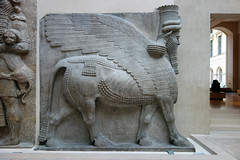
Apanada Palace
Stairways decorated by register or relief sculptures depicting representatives of the 23 nations of the Persian empire
Functon: Residential + Treasury + Administrative + Ecomomic Center + Religious areas
Ceremonial Palace
King of the Persian empire hosted guests and tributes
Relief sculptures reinforce the power of the king and the span of the empire
Persian kings used art and architecture to reinforce their power over the diverse population and send messages to the people they ruled over.
Persian Empire was eventually conquered by Alexander the Great
Audience hall to receive visitors
Hypostyle Hall: A space where the roof is supported by pillars of columns
- Allows for roofing of large, open areas.
- Creates a “forest of columns” appeareac\nce
- Originally 72 columns, now only 14
- Roof → 24 meters/78 feet tall
Capital: The topmost part of a column or pillar where the verticle support meets the roof
